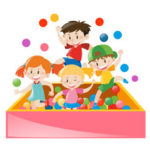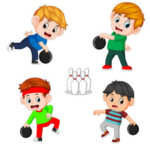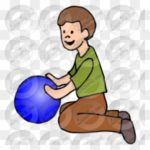
by Neetu | Jun 3, 2020 | Fitness Activity
Movement skills/concepts
Underhand serve/strike with a short implement (bat/racquet) to target, and receiving a ball.
Set-up
- Racquets/bats, balls.
- A large square in a hard area is divided into four, with a semicircle in one corner (square 1) as a service area.
- Each group of five–six has a player with a bat/racquet at each square; the other players are waiting.
Activity
The player at square 1 drops the ball in the service area and hits to any other square. The next player lets it bounce and hits to any square. When a ball misses a square, the player who hit it gives their racquet to the next waiting player, who joins in at square 4 while the other participating players move towards square 1 to fill the gap. The player at square 1 then serves.
The ball must be hit upwards at all times.
- side on to hit
- eyes on ball
- repositioning with every hit
Variations
Vary area and equipment: Divide the square with four benches to act as nets, and increase the size of the squares.
Introduce umpire: Use a waiting player as an umpire.
Vary skill: Strike with the hand(s).
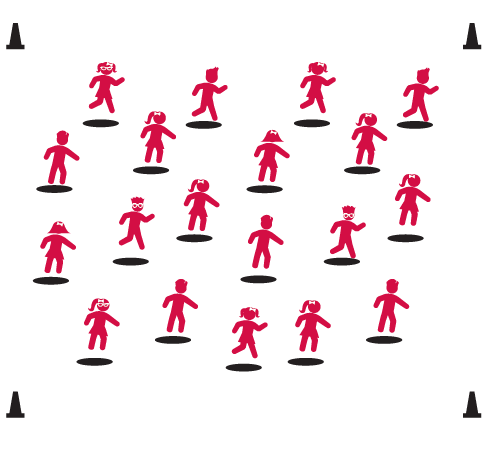
by Santosh | Jun 3, 2020 | Fitness Activity
LEARNING OUTCOMES
Demonstrates two of the five critical elements for jumping and landing in a vertical plane
STUDENT TARGETS
Skill: I will demonstrate jumping and landing, following the teaching cues given in class.
Cognitive: I will listen to and safely follow all directions without any help from the teacher.
Fitness: I will stay safely active during No More Monkeys.
Personal & Social Responsibility: I will use equipment and space within the activity area appropriately in order to keep my classmates and myself safe.
TEACHING CUES
Traveling Cues
Jumping Cues
- Bend to Get Ready
- Extend Up
- Stretch for the Sky
- Bend to Land Soft
ACTIVITY SET-UP & PROCEDURE
Equipment:
1 poly spot per student
Set-Up:
- Scatter poly spots throughout a large activity area.
- Each student to a poly spot.

Activity Procedures:
- Raise your hand if you know the song 10 Little Monkeys. It’s not safe to jump on a real bed like the monkeys in the song do. To be safe, we’re going to pretend that our poly spots are beds…and we’re monkeys!
- On the start signal, everyone is going to skip to find a new bed to jump on. When you get to a new bed, jump with 2 feet onto the spot and sing, “10 little monkeys jumping on the bed…”
- When you’re done with the song, skip to another bed and sing, “9 little monkeys jumping on the bed…”
- Continue skipping, jumping, and singing until you get all the way down to 1 little monkey.
- After you finish singing for 1 little monkey, sit crisscross on the final bed that you jumped on and sing,
“No more monkeys jumping on the bed!”
COOL DOWN/ CLOSURE
Review Skill/Activity, stretching, and questions.
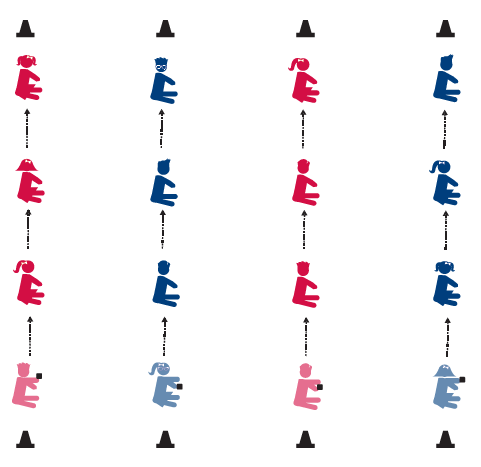
by Santosh | Jun 3, 2020 | Fitness Activity
LEARNING OUTCOME
- Travels demonstrating a variety of relationships with objects
- Shares equipment and space with others
STUDENT TARGETS
Skill: I will travel safely within the activity area moving around my teammates as we “move our train.”
Cognitive: I will be able to explain what sharing and cooperation mean during group discussion.
Fitness: I will actively participate in physical education while following class rules and protocols.
Personal & Social Responsibility: I will work independently with my teammates with no more than one rule reminder from the teacher.
TEACHING CUES
ACTIVITY SET-UP & PROCEDURE
Equipment:
- 1 beanbag per group of 5 or 6 students
- 2 cones per group of 5 or 6 students
Set-Up:
- Using cones, form 2 parallel lines approximately 20 feet apart. Number the cones across from each other 1 and 2.
- Send groups of 5 or 6 students to a set of cones with 1 beanbag for the group.
- Each group sits side-by-side in a single file between cones 1 and 2, starting next to the cone number 1.
- The beanbag begins with the student closest to cone 1.

Activity Procedures:
- It’s time to send the train down the tracks!
- On “Go”, the student with the beanbag will pass it to the next person. As soon as the pass is made, that student will get up and walk quickly to sit at the other end of the line. This sequence continues until the
line makes it to the other end of the area and a student sits next to cone number 2.
- At cone number 2, tap the beanbag to the cone and then use the same process to send it back down
the tracks toward cone number 1. Continue until you hear the stop signal.
COOL DOWN/ CLOSURE
Review Skill/Activity, stretching, and questions.
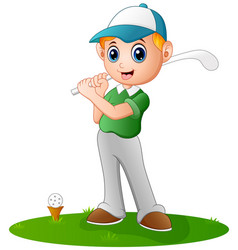
by Neetu | Jun 3, 2020 | Fitness Activity
Movement skills/concepts
Striking a stationary ball with a long implement (golf club) with accuracy.
Set-up
- Golf clubs, small plastic balls, and a variety of targets: small and large hoops, cones/ markers, buckets, bins, boxes.
- Targets, each with points allocated to it, are set out at varying distances from the striker, in a defined grass or hard area.
- Small groups of three-four, with a club for each player.
Activity
In turn, players hit five balls, scoring points if the ball hits or lands in the target. The aim of the game is to get the highest possible score. In the next round, players aim to increase their score
- hitting under the ball for a short distance
- hitting behind the ball for longer distance
- following through in the direction of the target
Variations
Vary aim: Achieve a score of 21 with the fewest hits possible.
Vary skill: Use beanbags and throwing, soccer ball and kicking, softball bat and ball, and striking off a tee.
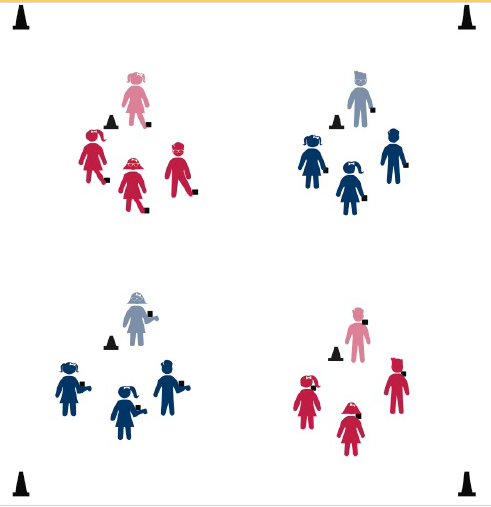
by Santosh | Jun 3, 2020 | Fitness Activity
LEARNING OUTCOMES
Accepts responsibility for class protocols with behaviour and performance actions.
STUDENT TARGETS
Skill: I will move safely in self-space.
Cognitive: I will recognize and define at least 1 academic language vocabulary word.
Fitness: I will actively participate in the activity while following class rules and protocol.
Personal & Social Responsibility: I will listen to my classmates’ instructions and respond appropriately.
TEACHING CUES
- Ask
- Listen
- Respond Appropriately
ACTIVITY SET-UP & PROCEDURE
EQUIPMENT:
- 1 beanbag per student
- 1 cone per group of 5 or 6 students
SET-UP:
- Send groups of 5 or 6 students to a cone, each student with a beanbag.
- One student is the Patient and stands next to the cone. The other students are Doctors and form an arc around the Patient.

ACTIVITY PROCEDURES:
- It’s time to play Beanbag Bandage. The Patient was injured at recess and the doctors need to figure out where to put the bandage.
- Altogether, the doctors will ask, “Where does it hurt?” The Patient picks a body part to call out and places the beanbag over the injury. For example, “My elbow hurts!”
- All of the doctors follow along by also placing beanbags on their elbows and saying, “All bandaged up! Is that better?” The patient says, “Yes, thank you!”
- The doctors ask again, “Where does it hurt?” The Patient says another body part, “My toes hurt!” This continues until the teacher stops play and chooses new Patients.
COOL DOWN/ CLOSURE
Review Skill/Activity, stretching, and questions.
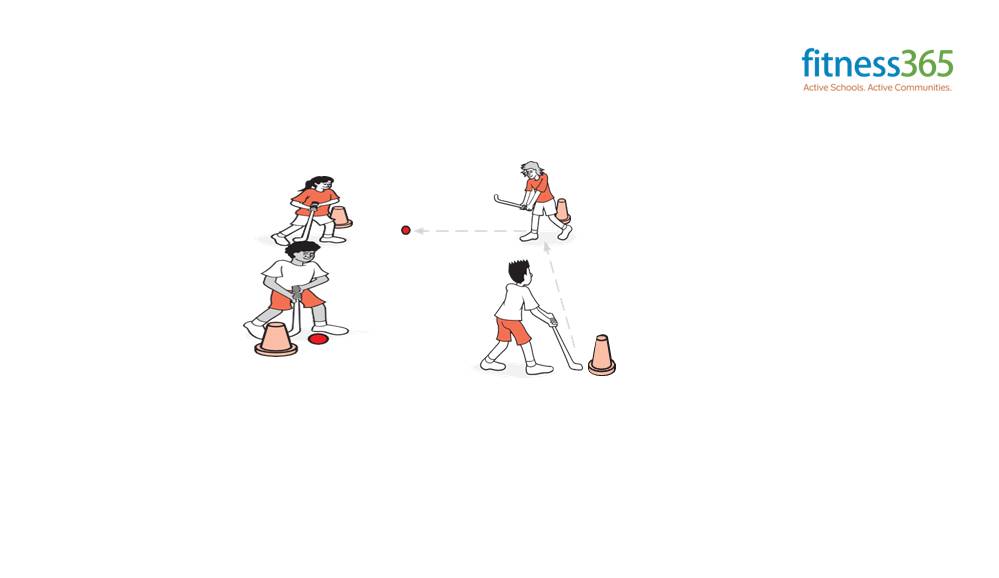
by Neetu | Jun 3, 2020 | Fitness Activity
Movement skills/concepts
Striking with a long implement (hockey stick), passing and moving space awareness, and relationships (with others).
Set-up
Hockey sticks, small balls. Two activities in a level grass or hard area.
Activity 1
Each group of four stands in a square formation: one player is the leader, two others have a ball, all have a stick.
One player with a ball pushes/hits it to the leader, who passes it to the player without the ball. The other player with a ball then passes to the leader who passes to the player without a ball. Continue, alternating the passes. Change the leader.
Activity 2
Each group of three works in a square defined by four markers. All players have a stick and each stands beside a marker. One of the players has a ball.
Player 1 pushes/hits to Player 2, then runs in the opposite direction to the vacant marker. Player 2 controls the ball, hits to Player 3, then runs in the opposite direction to where Player 1 started. Player 3 continues by hitting to Player 1.
Variations
Vary distance of markers: Place markers closer for pushes, further apart for hits.
Vary ball: Strike or throw a large ball.









